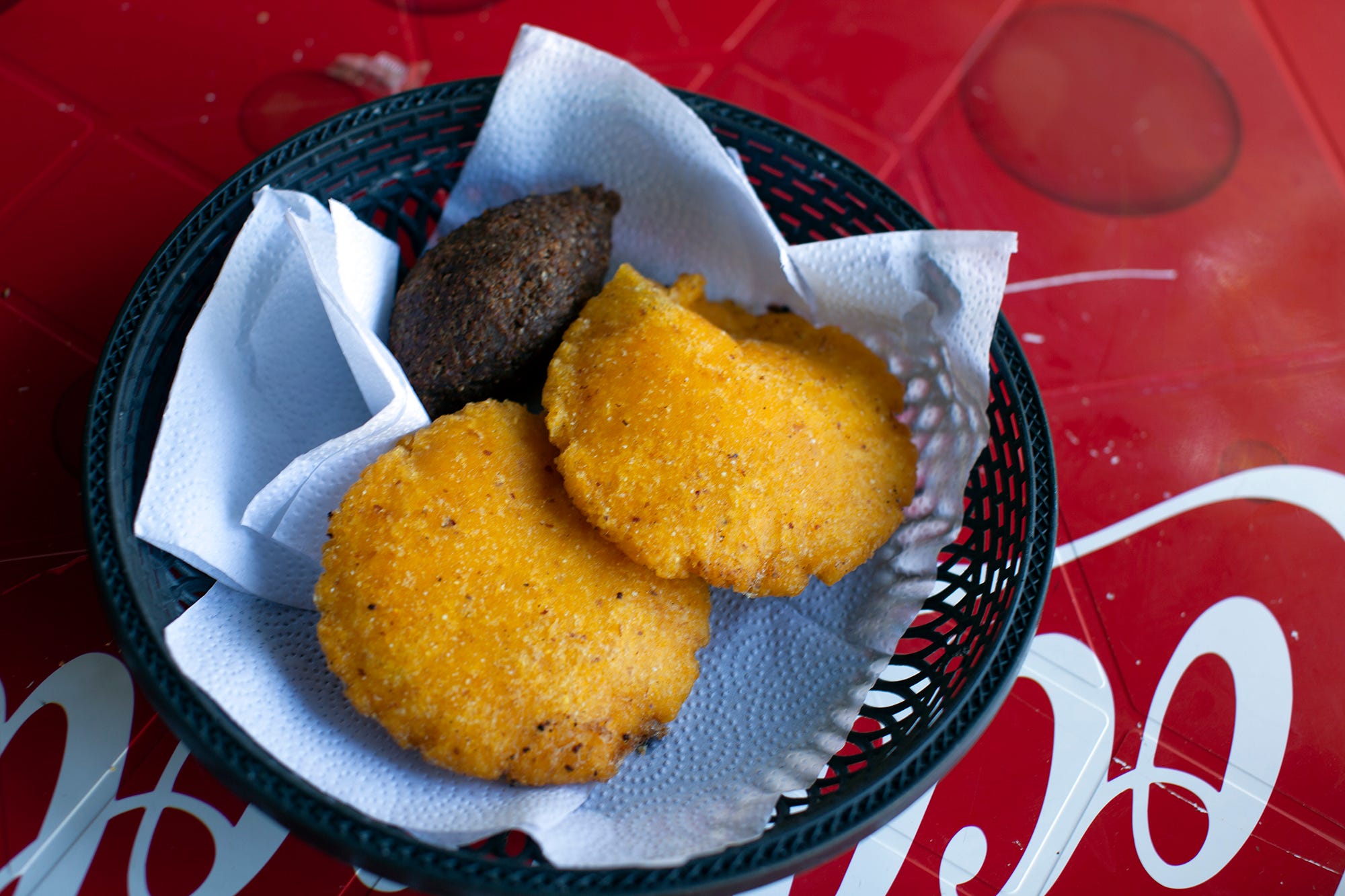There’s as much, if not more, culinary technique and intuition in making an arepa de huevo than any classical European recipe. There I said it.
Traveling around Colombia’s Caribbean Coast a few months ago, I made sure to visit several streetside snack stalls with cauldrons of hot oil doling out hot carimañolas, kibbeh and other fritos. The arepa de huevo is without a doubt the star here.
“You bring whatever French soufflé and I’ll do my arepa de huevo and we’ll see,” Colombian born chef Stephanie Bonnin from La TropiKitchen said in my podcast interview with her last year.
The recipe has been around for 200 years in various forms and some point to the town of Luruaco east of Cartagena, where corn is grown in abundance, though it’s likely that Arab immigrants and enslaved Africans likely played a role in developing the recipe. Regardless of its origins, the modern art of the technique is the same. The arepa de huevo might be street food made from basic ingredients and cost next to nothing, but to attain a perfectly cooked egg with a runny yolk within a crisp arepa that is fried in hot oil is near miraculous. You can try to do it with the recipe below, but you probably won’t get it right on the first try.
If the oil is too hot or it is in the oil too long, the egg will cook through. If it’s not hot enough, the arepa won’t fry and the egg will be completely runny. The only way to consistently get the ideal texture is by doing it over and over and over again. Many of the fritangueras in cities like Cartagena or Barranquilla have been doing it for decades. It’s not something that can be taught in a day. Anyone can make it, though most will only be able to achieve an arepa with a completely cooked egg inside of it.
Keep reading with a 7-day free trial
Subscribe to New Worlder to keep reading this post and get 7 days of free access to the full post archives.




